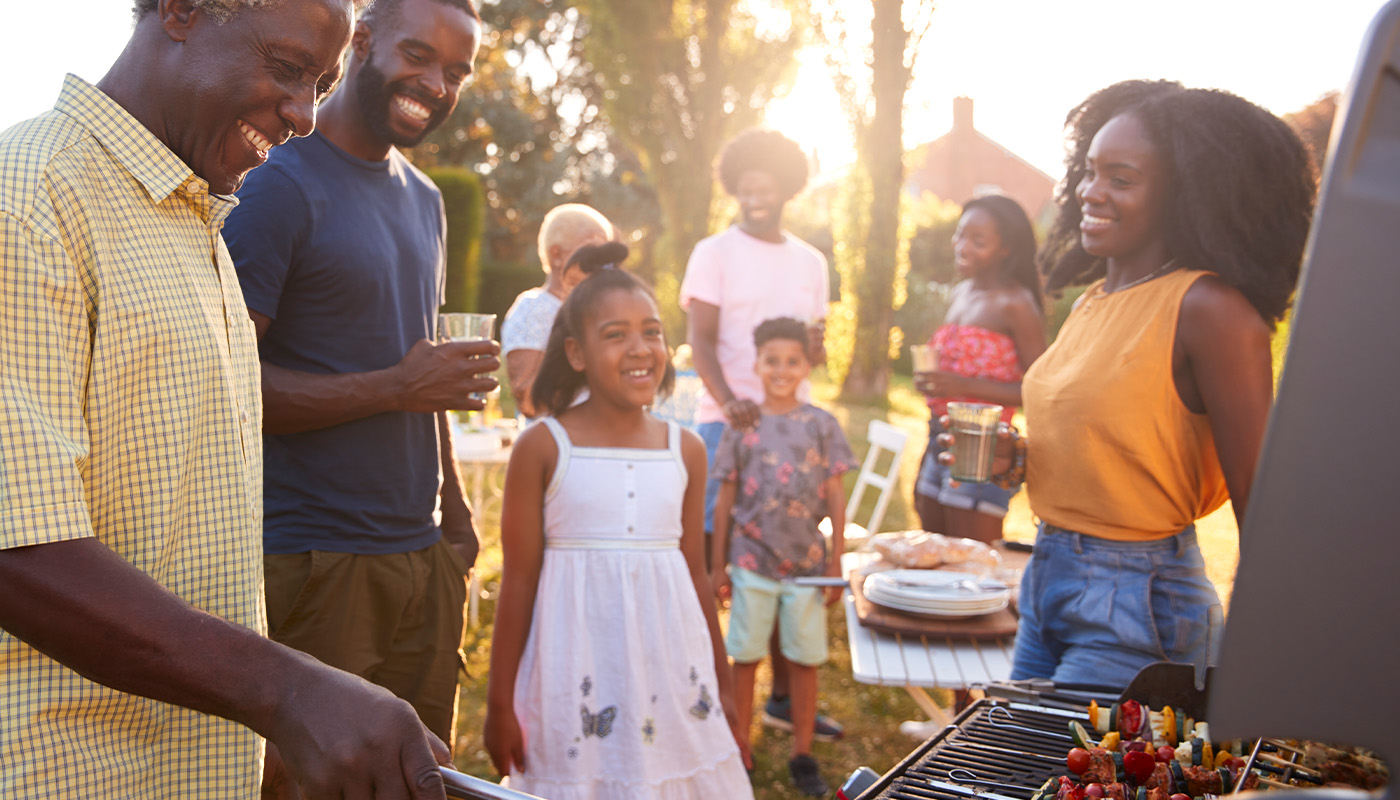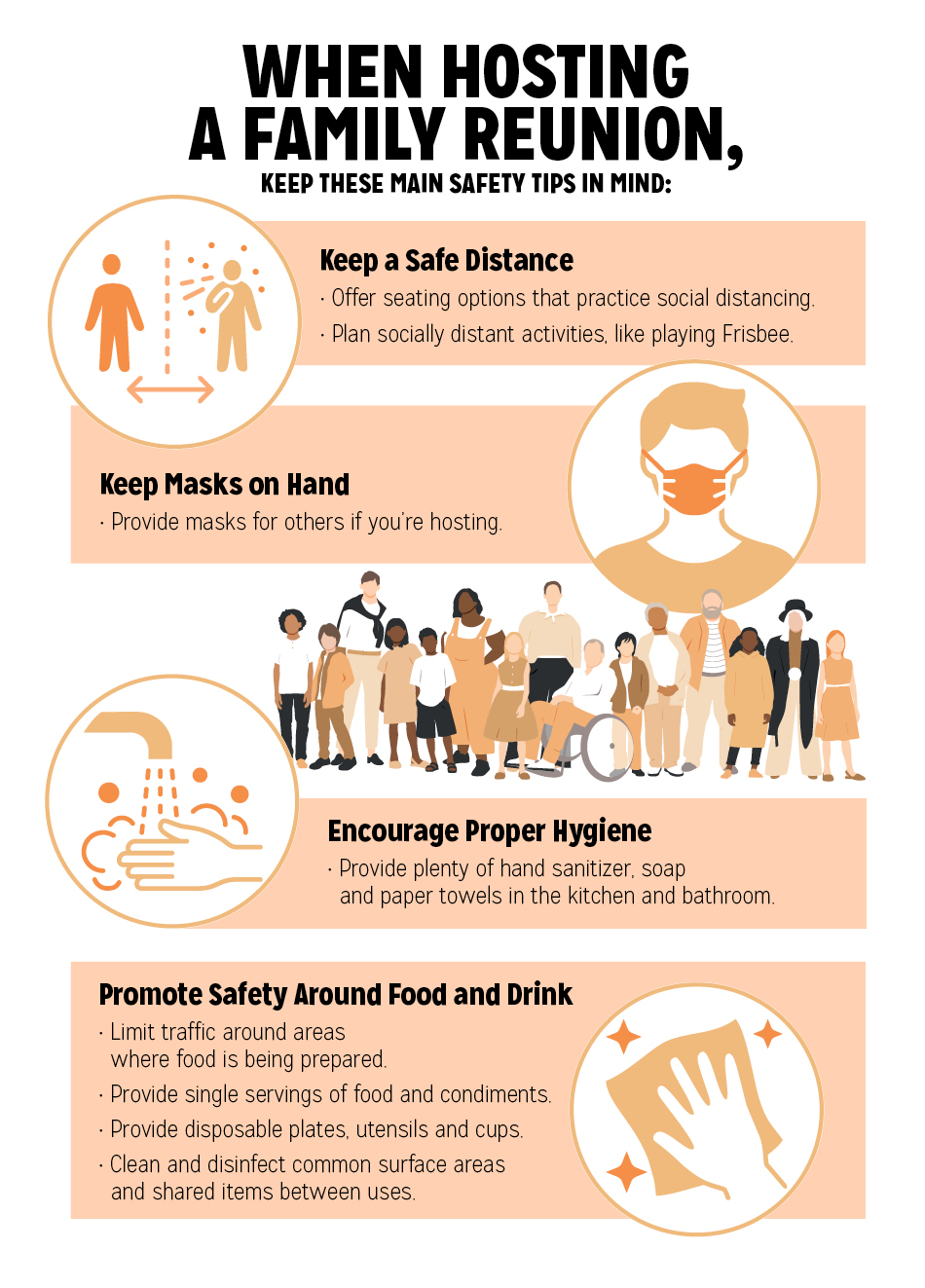Throwing a (Safer) 2022 Family Reunion—Your Game Plan
With COVID-19 restrictions on the decline, you can plan a clan get-together that’s fun and less worrisome for all.
 iStock
iStock
Family reunions—especially for families with faraway relatives—are a fun and meaningful way for families to renew relationships, introduce children and new family members to the extended family, and share and celebrate a family’s shared heritage and culture. They can also create new memories that can strengthen family bonds.
With many COVID-19 restrictions lifted, now may finally be the time to gather loved ones you probably haven’t seen for a while for a big reunion.
Of course, as COVID-19 may still concern you and some family members, you can follow these simple steps to prepare for the event and ensure everyone has an enjoyable and safe time.

Small and large gatherings
Before the event
You’ll want to put the right logistics in place to make sure the event flows as smoothly as possible:
- Help visiting guests find lodging in a hotel that puts extra care into cleanliness. Find out more about AAA’s Inspector’s Best of Housekeeping award and use the Best of Housekeeping filter when booking online at AAA.com/hotels.
- Help direct guests to local car rentals for their stay. Hertz, a AAA partner, makes sanitation a top priority for their fleet. Plus, for more of a contactless experience, Hertz Gold Plus members can skip the counter line and go straight to their vehicles—a free option for AAA Members. You can book a vehicle from them here.
- And for safety’s sake: Make sure you’re stocked with masks, tissues and hand sanitizer for people who want them. Consider having a COVID-19 test on hand should a family need one.
Also, consider making a few arrangements ahead of time to help build comradery during the event:
- Give your family reunion a theme, and then make custom family T-shirts or hats for everyone. These souvenirs will mark the reunion as a special event.
- Hire a photographer to take a family photo. And don’t forget to request that everyone wear the new family apparel and say, Famileeee! when smiling for the photo.
- Collect old family photos from your extended family and create a slideshow to share on a computer or project onto a screen at the reunion.
- Throw a family movie night, projecting a guaranteed crowd-pleaser onto a portable backyard screen (search the internet for screen rentals near you).
Destination reunions
Families can go on vacation together to favorite destinations such as a beach, a national or state park, or a heritage destination. Resorts are often an excellent choice because they have activities for all ages. Be sure to send invitations at least six months in advance so family members can make travel arrangements.
During the reunion
- Consider activities such as Frisbee, cornhole or a family movie night.
- Have a family potluck featuring dishes from family recipes.
- Host a talent show or karaoke night.
- Cheer for the family’s favorite team while watching a sporting event.
- And for safety’s sake: Provide hand sanitizer stations; provide multiple seating areas that offer social distancing; and use disposable plates, cups and utensils and single-serve condiments.
A family cruise
Cruising offers an array of dining and recreational options for multigenerational families. Once aboard, there’s less worry about getting everyone from one place to another for dining or events. Like resorts, cruises provide activities for all different ages—and plenty of time for the family to relax together. And when you’ve had enough family time, you’ll find plenty of space to explore on your own.
As far as COVID-19 goes, here are some things you and your family members can do for safety’s sake:
Before boarding
- Check to see if your cruise line requires proof of vaccination.
- Get a COVID-19 test as close to your departure date as possible—no more than three days before. Check to see if your cruise line requires a certain type of test.
The CDC’s COVID-19 Program for Cruise Ships lists those operating or planning to operate in U.S. waters. Check your ship’s color and vaccination status classification.
While on board
- Follow ship-specific safety protocols.
- If you develop COVID-19 symptoms while aboard, remain in your cabin and notify the onboard medical center immediately.
After the cruise
- Get tested three to five days after your trip.
The cruise line may contact you after you disembark if someone aboard receives a positive diagnosis for COVID-19. Click here for detailed CDC guidelines regarding cruise ship travel.